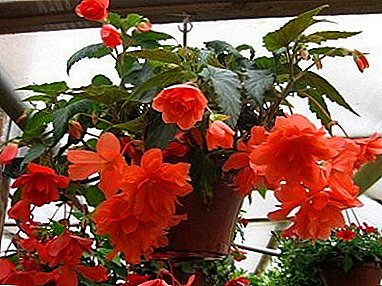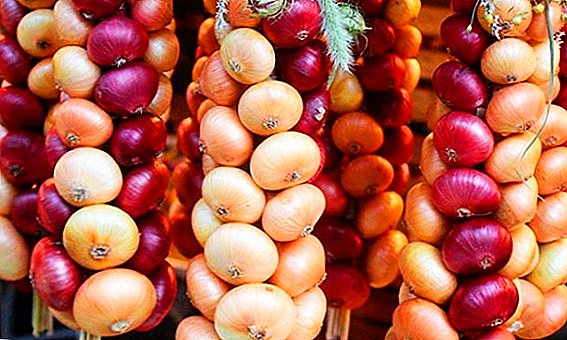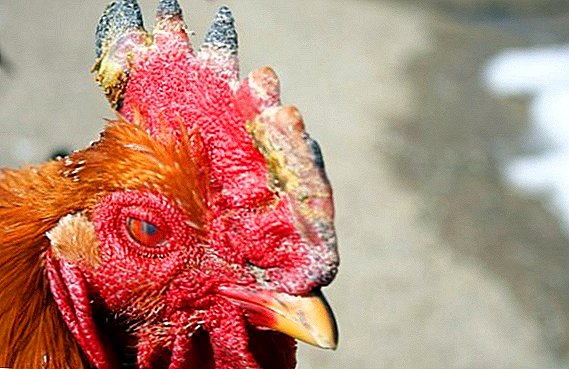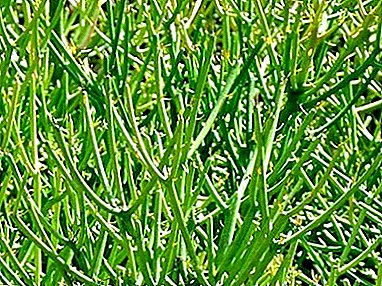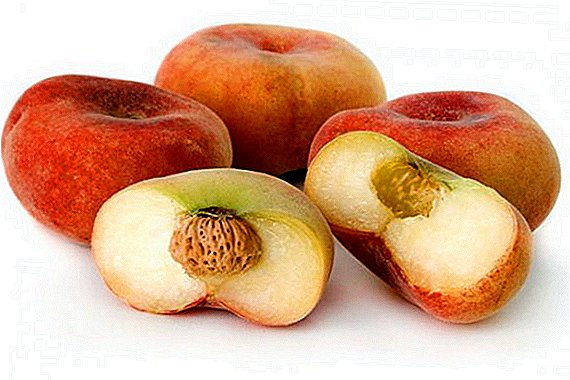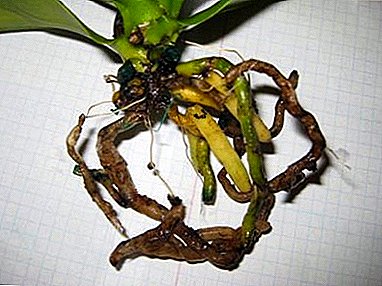
Indoor orchid belongs to the category of demanding and capricious plants, and all because of the natural habitat. Her homeland are considered exotic jungle. Sometimes it is not easy for such a flower to maintain the necessary mode at home. Late and poor-quality care leads to numerous problems with the roots. But do not make sudden conclusions. The withered plant can be reanimated and saved. The article will tell why the leaves become sluggish and the plant dies if the root system of the flower rots and what needs to be done and how to save the roots that remain.
What is root decay and how does it look?
Root rot is a common disease. which, as a rule, is caused by improper care of a flower or an attack of harmful microorganisms. There is rot mainly in the cold period of the year, when daylight decreases, the air temperature drops. Rot, if the process is not too running, treatable. And throwing away a sick flower is only a last resort.
Healthy roots are light green or pale gray. When moistened with water, the color becomes saturated, dark shade. Sick roots are dark brown, pale yellow with white bloom.
How to distinguish healthy roots from rotted?
 The first condition of a healthy root is firmness and elasticity. And accordingly, on the contrary, if the root is soft, when pressed it breaks or dents remain, most likely, it is not capable. External signs of a healthy rhizome:
The first condition of a healthy root is firmness and elasticity. And accordingly, on the contrary, if the root is soft, when pressed it breaks or dents remain, most likely, it is not capable. External signs of a healthy rhizome:
- smooth structure;
- meatiness;
- density;
- green, although the color may vary when interacting with the substrate or mineral fertilizers.
Experienced growers offer to check the status of the root system, not only on the basis of external signs, but also empirically. To make sure that the root system is alive, you need to pull the plant out of the pot and immerse the lower part in water. After 2-3 hours to get it. Viable roots will acquire the above symptoms. If the shoots remain sluggish, pale - feel free to remove.
Determining the state of roots solely by color is wrong. It is important to examine their physical condition.
We offer to watch a video on how to distinguish healthy roots from rotten orchids:
Effect on the whole plant
The root is an organ in orchids that is responsible for vital processes. First, the flower is attached to the roots by the substrate, thereby maintaining a vertical position. Secondly, the roots absorb moisture and micronutrients that are found in the soil. Third, they, along with the leaves, are involved in the process of photosynthesis. One can only imagine what will happen to a flower without a root system.
Rot is best cured when the disease is in its early stages. Recognizing the symptoms later, it is unlikely to be able to save Exotic from death.
How to determine the disease at an early stage?
If you regularly inspect the orchid, then at the next check the following symptoms may be alerted:
- the leaves began to turn yellow and fall off in large quantities;
- buds and flowers are showered;
- the appearance of dark spots on the foliage;
- orchid bent on its side;
- flower is unstable in a pot;
- black or dark brown root areas are visible;
- liquid leaks from the rhizome;
- the presence of a mucous membrane is possible;
- roots wet to the touch;
- there is a clear putrid odor.
A photo
Then you can see how rotting roots look like:





What to process at home from rotting?
To help an exotic plant and choose the right treatment, you should first determine the cause of rot, and only after using this or that tool.
Chemical
If it turned out that pests (whitefly, midges, shchitovka, thrips) or viral diseases cause rotting of the root system, then acaricides or insecticides, such as:
- Aktara;
- "Tsvetofos";
- "Fufan";
- "Inta-vir";
- Vermitek.
When fungal infections can not do without fungicides. Drugs that are most effective for prevention and treatment are fungicides that destroy pathogens of fungal diseases in the flora. There are they of a different spectrum of action. The main active substances of fungicides are: aldehydes, mercury, copper, manganese, organic substances.
- "Oxy";
- "Fundazole";
- "Immunotitofit";
- "Fitosporin";
- "Topas".
Folk
 What can you do at home to save rotting roots? Homemade recipes - tools proven over the years. Yes, they do not have such a degree of destruction as industrial ones, but they are more affordable and environmentally friendly.
What can you do at home to save rotting roots? Homemade recipes - tools proven over the years. Yes, they do not have such a degree of destruction as industrial ones, but they are more affordable and environmentally friendly.
- A decoction of cyclamen tubers. For the preparation will need finely chopped flower tubers. Boil them advised on low heat for 30-40 minutes. Leave for a day. After the broth, strain, and lower the diseased orchid roots into it for 5-10 minutes.
- Soap solution. 1 bar of laundry soap dissolved in 3 liters of clean warm water. Then immerse the roots in the soap solution for a few minutes.
- Oil solution. In 1 liter of water dissolve 2 tablespoons of olive oil. Orchid roots can be immersed in the mixture.
- Onion infusion. 3-4 small onions cook for 30 minutes. Then cool the broth and leave for a day. Pure flower roots should be left in the therapeutic fluid for 7-10 minutes.
Important. Folk remedies can only help in the early stages of the disease.
Step-by-step recommendations: what to do for different reasons and how to save a flower?
With pests
How to save the flower, if the roots began to rot because of pests? Overmoistened soil is a suitable breeding ground for pests. Such, for example, as a subtitle. These insects are constantly in motion. They feed on decaying plant tissue. The appearance of these little white bugs indicates the presence of rotting. How to fight:
- Place the diseased plant in quarantine, and disinfect the place where the pot was.
- Remove the orchid from the pot, remove excess soil from the roots.
- Under running water, wash and then dry the rhizome.
- Remove damaged root areas with a sharp, disinfected instrument.
- If the infection is not strong, then you should try one of the folk remedies.
- For larger problems, the flower must be treated with an insecticide solution.
- Leave for 2 days without substrate. It is advisable to wrap the roots with polyethylene to achieve the greenhouse effect. In such conditions, the pests will be destroyed.
- Put the plant in a dark, cool place.
- Make sure that the steaming does not occur, otherwise there are other problems with the orchid.
- After all the procedures, the plant is planted in a new soil.
Substrate compaction
 In the fresh substrate are natural elements that are loosely attached to each other. Thus, an air gap is created, due to which the roots have access to oxygen. However, over time, the tree bark, which is in the composition, stratifies, respectively, the soil is compacted, becoming more dense. Air access is limited, resulting in a rotting process. How to save the plant if the roots are rotten due to compaction of the substrate:
In the fresh substrate are natural elements that are loosely attached to each other. Thus, an air gap is created, due to which the roots have access to oxygen. However, over time, the tree bark, which is in the composition, stratifies, respectively, the soil is compacted, becoming more dense. Air access is limited, resulting in a rotting process. How to save the plant if the roots are rotten due to compaction of the substrate:
- Carefully remove the flower from the pot and remove residual soil.
- Rinse the roots under running warm water.
- Cut off the damaged areas of the roots.
- Treat sections with antiseptic.
- Replant the orchid in a new substrate.
- Use only purified, soft water for irrigation.
- Update the soil every three years, at least.
With fungal diseases
If the orchid's roots are rotting, and the leaves have visible spots of a characteristic yellow color with a rotten middle, most likely the soil fungi are to blame. Such diseases are well developed in an environment with low humidity and lack of light.
- Isolate the diseased plant.
- Remove damaged root areas with a sharp, disinfected instrument.
- Treat the soil and the plant with a systemic fungicide solution.
- It is advisable to use the method of immersing the pot in the chemical mixture, if it is described in the recommendations on the use of the drug.
- The procedure is repeated 3 times with a break of 10-14 days.
- Days 7 flower should be in a dark place.
- Normalize the microclimate parameters in the room.
- Adjust the irrigation system.
Mechanical damage
 It happens that the underground part begins to rot because of injuries. It is possible that part of the roots broke off during the transplantation, and the wounds were not treated with an antiseptic. Living tissue is a pass for bacteria and pathogens. The injured root system will rot. What to do if the roots are rotted? In this case, you should once again transplant plants, cut off rotten areas and, be sure to disinfect them. Then place the exotic in mineral-rich soil and ensure proper care.
It happens that the underground part begins to rot because of injuries. It is possible that part of the roots broke off during the transplantation, and the wounds were not treated with an antiseptic. Living tissue is a pass for bacteria and pathogens. The injured root system will rot. What to do if the roots are rotted? In this case, you should once again transplant plants, cut off rotten areas and, be sure to disinfect them. Then place the exotic in mineral-rich soil and ensure proper care.
Use too concentrated fertilizers
The root system of orchids is rather sensitive to the effects of potassium and phosphate salts in concentrated fertilizers. And if you deliberately increase the frequency of applications, then it is possible that the roots will be burned. In this state, they can not absorb water, and being in wet ground, swell and rot.
- We take out the flower from the old pot.
- Immerse the lower part of the plant in a container with warm water, leave for 2 hours.
- Gently wipe the roots with a paper towel.
- Damaged places - remove and disinfect.
- Transplant the orchid in a transparent pot.
- The first 1-2 months we exclude fertilizers completely.
If the content is too wet
It is not ironic, but being constantly in wet ground, the root system cannot be saturated with water. Between irrigation the soil should dry completely. The sun's rays should fall on the soil, and dry it. The main condition for feeding roots with water is light. If it is small, the leaves lack moisture, and the roots rot. What to do if the orchid is heavily flooded and the roots began to rot, how to save the life of a flower? Measures taken in this case:
- Get the orchid out of the pot.
- Clean the root system of ground residue and rinse with warm water.
- Remove sore spots, cuts process crushed activated carbon.
- Leave the flower to dry out overnight.
- Replant exotic in a new substrate, with the obligatory presence of a drainage layer.
- Control the irrigation system.
Step-by-step instructions on how to reanimate a plant
 What to do if the newly purchased or long-growing orchids at home completely roots become rotten and yellow leaves, how to resuscitate? Is it possible to save a flower with rotten roots? Yes, even If room exotic has lost all its roots, this is no reason to throw the plant in the trash. Resuscitate the orchid in several ways.
What to do if the newly purchased or long-growing orchids at home completely roots become rotten and yellow leaves, how to resuscitate? Is it possible to save a flower with rotten roots? Yes, even If room exotic has lost all its roots, this is no reason to throw the plant in the trash. Resuscitate the orchid in several ways.
No hothouse method
- We take out the exotic from the pot.
- Remove excess substrate with a stream of warm water.
- We select a sharp decontaminated knife or pruner.
- Remove the damaged areas with a pre-prepared tool.
- Sprinkle sections with an antiseptic agent that does not contain alcohol.
- We give time to dry the wounds.
- The remnants of the root system will stir in a solution of root stimulants.
These drugs strengthen the immunity of plants, and contribute to the rapid emergence of new root processes. Epin or Zircon are considered effective. Method of application: Dilute 1 drop of the drug in 1 liter of water. In this flower should arrive about 2 hours.
- Be sure to ensure that the liquid does not fall on the leaves.
- Next, place the plant in a container with purified water.
- In the room where the flower is located, the temperature should be maintained at + 23-25ºС.
- Mandatory use of mineral components, based on potassium and phosphorus, 1 time per week.
- Once every 30 days, apply a root stimulator, the time the plants are kept in the solution is not more than 6 hours.
Hothouse method
You can do without a greenhouse if some of the roots are still available. And when the root system is missing, then you should choose the greenhouse option. Crop and process the roots as described above, and then:
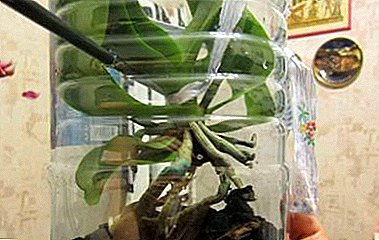 We take a pot and pour a layer of expanded clay granules with a thin layer.
We take a pot and pour a layer of expanded clay granules with a thin layer.- Top lay moss sphagnum, pre-disinfected.
- All we pour with pure water and we place the rosette of a sick flower on top.
- We transfer to a mini-greenhouse, where the following conditions are maintained: temperature + 25-28 ° С, humidity within 80%, lighting 12-14 hours per day.
- The flower should be in such conditions until the roots grow 3-5 cm long.
- After it is allowed to transplant the flower in a special substrate for orchids and remove the greenhouse.
We offer to watch a video about the greenhouse method of resuscitation of an orchid without roots:
Prevention
The condition and development of an orchid directly depends on the parameters of the microclimate and the measures for the care. Therefore, it is important: to control the irrigation system, update the substrate once every 3 years, use quality water, strengthen the plant immunity, carry out prevention of infectious diseases, regularly examine the root system.
Surely Orchid without roots can be restored, but the process is not fast, it requires a lot of patience and time. Therefore, in order not to bring the flower to a similar state, follow all the recommendations for care.


 We take a pot and pour a layer of expanded clay granules with a thin layer.
We take a pot and pour a layer of expanded clay granules with a thin layer.